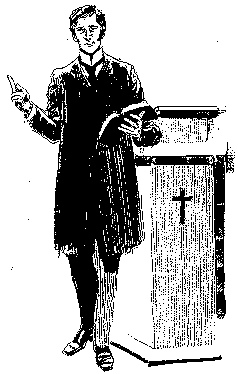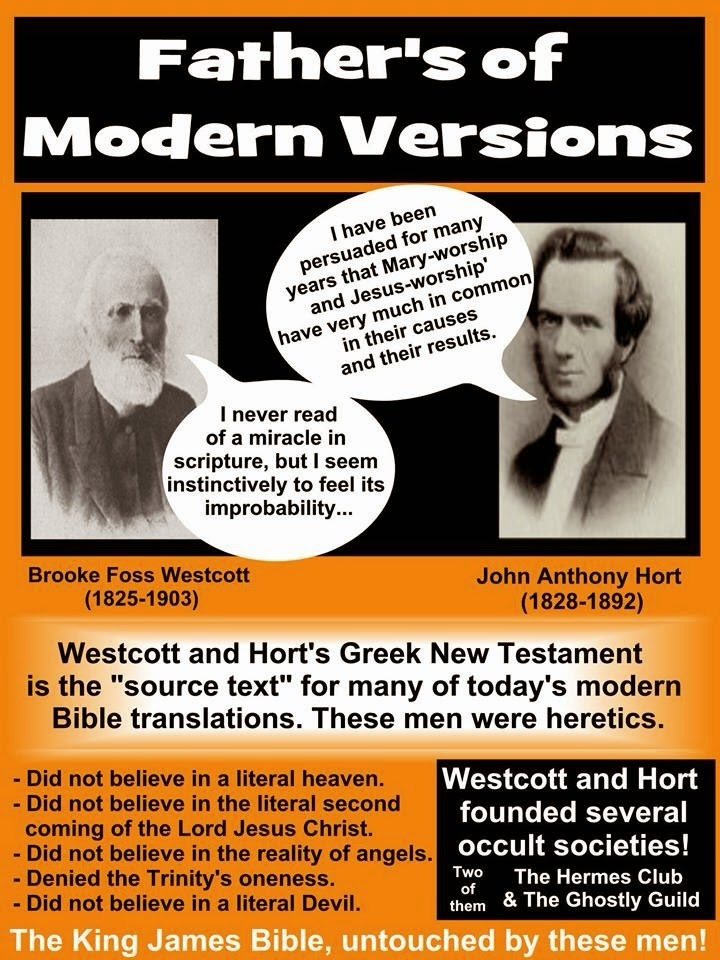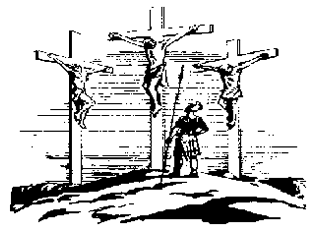 There are other extant Greek texts which are referred to as the 'Minority
Texts' simply because they represent only about 5% of existing
manuscripts. Another 5% are Neutral Texts: sometimes
agreeing with the majority and at others with the minority. The 'Minority
Texts' are also known as the Alexandrian Texts because
they were produced in Alexandria in Egypt. The Minority Texts were rejected
by the early Christians and also by all the Protestant
Reformers of the 16th and 17thcenturies. The
Reformers, who were well aware of the existence of the Minority Texts,
considered them unfit for translation purposes. These are very important
points to bear in mind. Why did the early
Christians and the Protestant Reformers reject the Minority Texts?
There are other extant Greek texts which are referred to as the 'Minority
Texts' simply because they represent only about 5% of existing
manuscripts. Another 5% are Neutral Texts: sometimes
agreeing with the majority and at others with the minority. The 'Minority
Texts' are also known as the Alexandrian Texts because
they were produced in Alexandria in Egypt. The Minority Texts were rejected
by the early Christians and also by all the Protestant
Reformers of the 16th and 17thcenturies. The
Reformers, who were well aware of the existence of the Minority Texts,
considered them unfit for translation purposes. These are very important
points to bear in mind. Why did the early
Christians and the Protestant Reformers reject the Minority Texts?
The answer is:
- The Minority Texts were the work of unbelieving Egyptian scribes who did not accept the Bible as the Word of God or JESUS as the SON of GOD!
- The Minority Texts abound with alterations, often a single manuscript being amended by several different scribes over a period of many years: something the Aaronic priests and Masorites would never have tolerated when making copies of the Scriptures.
- The Minority Texts omit approximately 200 verses from the Scriptures. This is equivalent to 1st and 2nd Peter.
- The Minority Texts contradict themselves in hundreds of places.
- The Minority Texts are doctrinally weak and often dangerously incorrect.
Proof of these astonishing allegations will follow in Part Two where we will take a close look at some 80+ Bible verses corrupted by the Minority Text.
Yet, startling as it may sound, every modern English Bible relies on the
Minority Text as its underlying New Testament text in preference to Textus
Receptus! Isn't that an amazing revelation? What brought about this
almost incredible switch from the reliable Textus Receptus, beloved
by the early Christian church and the Protestant Reformers,
to the corrupt minority text favoured by the Roman Catholic Church? It is
important that you find out soon: because the modern "Bible"
you may be faithfully studying every day is really nothing more than a
counterfeit posing as the Word of God! If it is any consolation to you,
do remember that I was equally in the dark and totally devastated by my
findings.
Misleading Footnotes
Modern translations abound with misleading footnotes, which do little else but cast doubt on the King James Version. Examples are:
- The Hebrew of this line is obscure.
- The meaning of the Hebrew is uncertain - or unknown.
- Other ancient mss add …
- Other ancient mss omit…
- Other ancient mss read …
- Other ancient mss insert…
- Some early mss read…
- The most ancient authorities omit John 7:53 - 8:11
- The best manuscripts omit this verse. (e.g. Matt.17:21, 18:11, 23:14, Mark 7:16, John 5:4)
- Some of the most ancient authorities bring the book (Mark) to a close at the end of Mark 16:8
- Many mss do not contain the remainder of this verse. (e.g. Acts 8:37)
- Many ancient authorities read…
- Not found in most of the old mss. (e.g. John 7:53-8:11)
In this article we will not analyse these footnotes, simply because there are scores of them scattered throughout the modern translations and each has a slightly different slant. However, one thing they all have in common: and that is, they ALL cast doubt on the accuracy of the Authorised King James Bible! By implication they all claim to be more accurate and reliable than the King James Version. In the preface of the Revised Standard Version (RSV) we read this misleading statement. "Yet the King James Version has grave defects." Oh how subtle is Satan, how evil and how sinister! The stunning fact is: the very opposite is true. The King James Version is infinitely more accurate and reliable than ANY modern English translation on the market today. And that is why for the past 386 years it has had - and continues to have - the blessing of the Almighty God upon it: something no modern version or translation can come anywhere near. Most, after a decade or two, disappear from the book shops, only to re-appear some years later with a few alterations under a new name.
How did it happen that the Minority Text supplanted the trustworthy and respected Textus Receptus which triggered the great Protestant Reformation during which tens of thousands of true believers perished by flame, famine and torture? Who is behind this dangerous deception that has engulfed the Christian Church? Do you know? Do you care? Is it important? Does it really matter?
I most certainly didn't know. But I do believe that it is vitally important that every believer know that Satan is behind it: not any particular Church, its leaders or its members - but the great enemy of souls! He is behind every deception ever aimed at the human race: and millions, in and out of the church, believe his lies. I for one had been living in blissful ignorance of the danger for many years: till a massive heart attack laid me flat on my back and I was moved - yea inwardly compelled - to make a deep study of the History of God's Word and how He has providentially preserved it till today.
Now let us turn our attention to the Minority Text's two most
prominent manuscripts on which most modern translations of the Bible heavily
rely. They are called Codex Sinaiticus (ALEPH ) and Codex
Vaticanus (B). The word 'codex,' incidentally, means that
the manuscript is in book form, with pages, as opposed to being a scroll.
But first a little about the man whom God raised up over 150 years ago to
expose the errors of the Minority Texts. His name is John
Burgon.
John William Burgon
John Burgon was undoubtedly one of the greatest defenders of the Greek text of the New Testament. He exposed the hundreds of amendments, deletions and additions in the Minority Text and defended the reliability of Textus Receptus till the day of his death. Unlike most Bible students, Burgon was a Greek scholar of the highest rank who spent much of his life browsing through the museums and libraries of Europe examining the ancient Greek manuscripts. He had first hand experience examining the Vatican texts whilst he ministered to a congregation in Rome. His findings are of utmost value in these days of willful, spiritual ignorance and sin. I will quote a few extracts about this magnificent warrior from David O Fuller's book Which Bible?
| Quote: | "John William Burgon was born
August 21, 1813. He matriculated at Oxford in 1841, taking several high
honours there, and his B.A. 1845. He took his M.A. there in 1848…the
thing about Burgon, however, which lifts him out of
the nineteenth century English setting and endears him to the hearts of
earnest Christians of other lands and other ages is his steadfast
defence of the Scriptures as the infallible Word of God. He strove with
all his power to arrest the modernistic currents which during his
lifetime had begun to flow within the Church of England, continuing his
efforts with unabated zeal up to the very day of his death. With this
purpose in mind he laboured mightily in the field of New Testament
textual criticism. In 1860, while temporary chaplain of the English congregation at Rome, he made a personal examination of Codex B (Vaticanus), and in 1862 he inspected the treasures of St. Catherine's Convent on Mt. Sinai. Later he made several tours of European libraries, examining and collating New Testament manuscripts wherever he went…Of all the critics of the nineteenth century Burgon alone was consistently Christian in his vindication of the Divine inspiration and providential preservation of the text of Holy Scripture… Burgon regarded the good state of preservation of B (Codex Vaticanus) and ALEPH (Codex Sinaiticus) in spite of their exceptional age as proof not of their goodness but of their badness. If they had been good manuscripts, they would have been read to pieces long ago. We suspect that these two manuscripts are indebted for their preservation, solely to their ascertained evil character; which has occasioned that the one eventually found its way, four centuries ago, to a forgotten shelf in the Vatican Library; while the other, after exercising the ingenuity of several generations of critical Correctors, eventually (viz. in A.D.1844) got deposited in the wastepaper basket of the Convent at the foot of Mount Sinai. Had B (Vaticanus) and ALEPH (Sinaiticus) been copies of average purity, they must long since have shared the inevitable fate of books which are freely used and highly prized; namely, they would have fallen into decadence and disappeared from sight. Thus the fact that B and ALEPH are so old is a point against them, not something in their favour. It shows that the Church rejected them and did not read them. Otherwise they would have worn out and disappeared through much reading. For an orthodox Christian Burgon's view is the only reasonable one. If we believe that God gave the Church guidance in regard to the New Testament books, then surely it is logical to believe that God gave the church similar guidance in regard to the text which these books contained… Who but those with Roman Catholic sympathies could ever be pleased with the notion that God preserved the true New Testament text in secret for almost one thousand years and then finally handed it over to the Roman pontiff for safekeeping? Surely every orthodox Protestant will prefer to think with Burgon that God preserved the true text of the Greek New Testament in the usage of the Greek-speaking Church down through the centuries and then delivered it up intact to the Protestant reformers." (Ref:F11) |
CODEX SINAITICUS (ALEPH)
This codex was produced in the 4th century. In his book Let's
Weigh the Evidence, Barry Burton writes of Codex Sinaiticus:
| Quote: | "The Sinaiticus is a manuscript that
was found in 1844 in a trash pile in St. Catherine's Monastery near Mt.
Sinai, by a man named Mr. Tischendorf. It contains nearly all of the New
Testament plus it adds the 'Shepherd of Hermes' and the 'Epistle
of Barnabas' to the New Testament. The Sinaiticus is extremely
unreliable, proven by examining the manuscript itself. John Burgon
spent years examining every available manuscript of the New Testament.
He writes about Sinaiticus...
THAT'S NOT ALL! On nearly every page of the manuscript there are corrections and
revisions, done by 10 different people. Some of these corrections were
made about the same time that it was copied, but most of them were made
in the 6th and 7th century. … Phillip Mauro, a brilliant lawyer who was
admitted to the bar of the US Supreme Court in April 1892, wrote a book
called "Which Version " in the early 1900s. He writes concerning
the Sinaiticus… 'From these facts, therefore, we
declare: first that the impurity of the Codex Sinaiticus, in
every part of it, was fully recognized by those who were best acquainted
with it, and that from the very beginning until the time when it was
finally cast aside as worthless for any practical purpose.' " (Ref:C1) |
In his excellent book An Understandable History Of The Bible, Rev. Samuel Gipp writes of
| Codex Sinaiticus: | "One of the MSS is called Sinaiticus and
is represented by the first letter of the Hebrew alphabet, Aleph. This
MS from all outward appearances looks very beautiful. It is written in
book form (codex) on vellum. It contains 147 1/2 leaves. The pages are
15" by 13 1/2" with four columns of 48 lines per page. It contains many
spurious books such as the 'Shepherd of Hermes,' the 'Epistle
of Barnabas' and even the Didache. The great Greek scholar, Dr Scrivener, points this out in his historic work A Full Collation of the Codex Sinaiticus. He speaks of correctional alterations made to the MS: 'The Codex is covered with such alterations... brought in by at least ten different revisers, some of them systematically spread over every page, others occasional or limited to separated portions of the MS, many of these being contemporaneous with the first writer, but the greater part belonging to the sixth or seventh century.' " (Ref:B5) |
CODEX VATICANUS (B)
The second major manuscript of the Minority Text is known as Codex
Vaticanus, often referred to as 'B'. This codex was also produced
in the 4th century. It was found over a thousand years later in
1481 in the Vatican library in Rome, where it is
currently held. It is written on expensive vellum, a fine parchment
originally from the skin of calf or antelope. Some authorities claim that it
was one of a batch of 50 Bibles ordered from Egypt by the Roman
Emperor Constantine: hence its beautiful appearance and the expensive
skins which were used for its pages. But alas! this manuscript, like its
corrupt Egyptian partner Sinaiticus (Aleph) is also riddled with
omissions, insertions and amendments.
Of Codex Vaticanus Samuel Gipp writes on
| page 72: | "This codex omits many portions of
Scripture vital to Christian doctrine. Vaticanus omits Genesis
1.1 through Genesis 46:28; Psalms 106 through 138; Matthew 16:2,3;
Romans 16:24; the Pauline Pastoral Epistles; Revelation; and everything
in Hebrews after 9:14. It seems suspicious indeed that a MS possessed by the Roman Catholic church omits the portion of the book of Hebrews which exposes the 'mass' as totally useless (Please read Hebrews 10:10-12). The 'mass' in conjunction with the false doctrine of purgatory go hand-in-hand to form a perpetual money making machine for Rome. Without one or the other, the Roman Catholic Church would go broke! It also omits portions of the Scripture telling of the creation (Genesis), the prophetic details of the crucifixion (Psalm 22), and, of course, the portion which prophesies of the destruction of Babylon (Rome), the great whore of Revelation chapter 17.
Vaticanus , though intact physically, is found to be in poor
literary quality. Dr Martin declares, 'B' exhibits numerous places where
the scribe has written the same word or phrase twice in succession. Dr J
Smythe states, 'From one end to the other, the whole manuscript has been
traveled over by the pen of some… scribe of about the tenth century.' If
Vaticanus was considered a trustworthy text originally, the mass of
corrections and scribal changes obviously render its testimony highly
suspicious and questionable." |
Rev. Gipp continues on page 73:
| Quote: | "The corrupt and unreliable nature of
these two MSS (Sinaiticus and Vaticanus) is
best summed up by one who has thoroughly examined them, John W Burgon:
'The impurity of the text exhibited by these codices is not a question
of opinion but fact...In the Gospels alone, Codex B (Vatican) leaves
out words or whole clauses no less than 1,491 times. It bears traces
of careless transcriptions on every page… If we are to be thorough and discriminatory in our evaluation of the true New Testament text, then we must not -- we cannot -- overlook these facts.' How did these MSS come into being? How did it happen that they should be beautiful to the eye, yet within contain such vile and devastating corruption? It seems that these uncial MSS along with the papyrus MSS included in this category all resulted from a revision of the true, or Universal Text. This revision was enacted in Egypt by Egyptian scribes! " (Ref:B6) |
Rev. Gipp
| continues: | "So we see that once a pure copy of the Universal Text (Textus Receptus) had been carried down into Egypt, it was recopied. During the process of this recopying, it was revised by men who did not revere it as truly the Word of God. This text was examined by the critical eye of Greek philosophy and Egyptian morals. These men saw nothing wrong with putting the Book in subjection to their opinion instead of their opinion being in subjection to the book. This process produced a text which was local to the educational centre of Alexandria, Egypt. This text went no further than southern Italy where the Roman Catholic Church found its unstable character perfect for overthrowing the true Word of God which was being used universally by the true Christians." (Ref:B7) |
The Westminster Dictionary of the Bible has this to say about Codex Vaticanus on page 624 under the article Versions.
| Quote: | " It should be noted, however, that there is no prominent Biblical MS. in which there occur such gross cases of misspelling, faulty grammar, andomission, as in B." (Ref:H2) |
Barry Burton comments further:
| Quote: | "For one thing…Vaticanus and Sinaiticus
disagree with each other over 3000 times in the gospels alone… Facts
about the Vaticanus. "It was written on fine vellum (tanned animal skins) and remains in
excellent condition. It was found in the Vatican Library in 1481
AD. In spite of being in excellent condition, it omits Genesis
1:1-Gen.46:28, Psalm 106-138, Matt.16:2-3, the Pauline pastoral
Epistles, Hebrews 9:14-13:25, and all of Revelation. These parts were
probably left out on purpose." |
Dean Burgon comments on Codices Sinaiticus (Aleph)and Vaticanus (B).
| Quote: | "Compromise of any sort between the two conflicting parties, is impossible; for they simply contradict one another. Codd. B and Aleph are either amongst the purist of manuscripts,- or else they are among the very foulest. The Text of Drs. Westcott and Hort is either the very best which has ever appeared,- or else it is the very worst; the nearest to the sacred Autographs,- or furthest from them."… "There is no room for both opinions; and there cannot exist any middle view." (Ref: P3) |
Oldest and Best
Bible students are often told that Codices Sinaiticus and Vaticanus are
older and better than other manuscripts: the implication being that they
must, therefore, be more accurate. But this conclusion is wrong. We
have already seen how Sinaiticus and Vaticanus are corrupt beyond measure.
To be sure they are 'better' in appearance, but
certainly not in their content. Remember they are written on expensive
vellum; so they ought to be in good shape. They are older, but older than
what? They are older than other Greek manuscripts of the New Testament. But
they are not older than the earliest versions of the Bible: the Peshitta,
Italic, Waldensian and the Old Latin Vulgate: versions which agree with the
Majority text. These ancient versions are some 200 years
older than A and B. Yes A and B are older than other Greek mss, but for
anyone to suggest that they are more accurate is absurd.
It is like someone saying 'You will find the greatest TRUTH being
preached in the oldest and most beautiful cathedrals of the world,' or, 'the
most beautiful women have the best characters.'
In his masterful book Revision Revised Dean Burgon wrote, over a hundred years ago, concerning the ages of Codices Vatican (B) and Sinai (Aleph):
| Quote: | "Lastly, - We suspect that these two Manuscripts are indebted for their preservation, solely to their ascertained evil character, which has occasioned that the one eventually found its way, four centuries ago, to a forgotten shelf in the Vatican library; while the other, after exercising the ingenuity of several generations of critical Correctors, eventually (viz. in A.D. 1844) got deposited in the waste-paper basket of the Convent at the foot of mount Sinai. Had B and Aleph been copies of average purity, they must long since have shared the inevitable fate of books which are freely used and highly prized; namely, they would have fallen into decadence and disappeared from sight." (Ref: P1) |
In short these two codices are old simply because:
- First: They were written on extremely expensive and durable antelope skins.
- Second: They were so full of errors, alterations, additions and deletions, that they were never used by true believers and seldom even by their own custodians. Thus they had little chance of wearing away.
Can any true believer imagine JEHOVAH, the Holy One of Israel, hiding Codex Vaticanus away for over 1000 years in the Vatican Library till 1481? Or prompting the deeply religious monks of St Catherine's Monastery to dump Sinaiticus into a waste basket? The very idea is ridiculous.
A vital fact to remember is that though codices Aleph and B (produced in the 4th century) are older than other Greek manuscript copies of the Scriptures, they are not older than the Peshitta, Italic, the Old Latin Vulgate and the Waldensian versions which were produced 200 years earlier in the 2nd century. All these versions, copies of which are still in existence, agree with Textus Receptus, the underlying text of the King James Bible. I repeat: these ancient versions are some 200 years older than Vaticanus and Sinaiticus: so the 'oldest is best' argument should not be used. All Bibles fall, basically, into one of two categories.
- Those based on the Majority Text.
- Those based on the Minority Text.
Which Bible you select for study each day is going to have an enormous effect on your spiritual growth and well being. Bear this vital fact in mind. END



